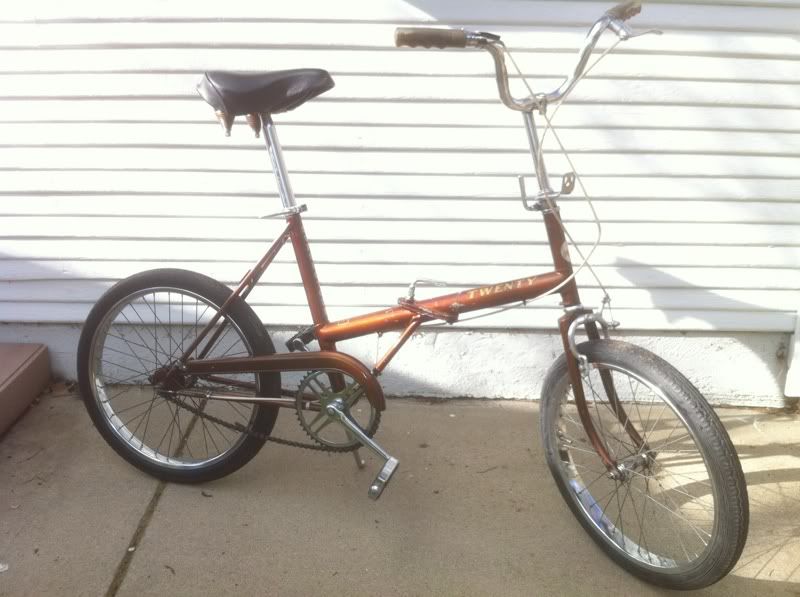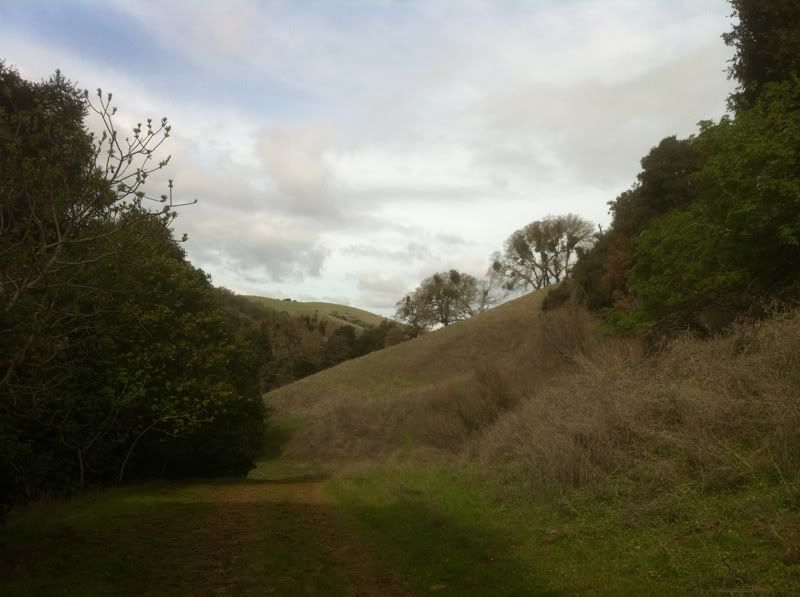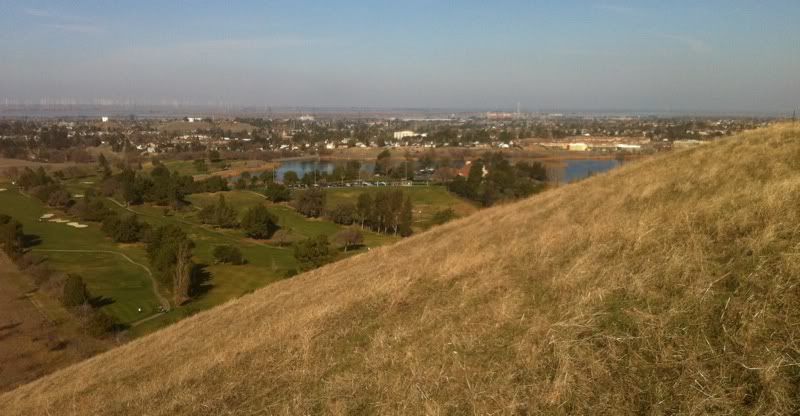I just scored this nice vintage folding bike. It's a Supercycle Twenty, made by Raleigh in Britain around 1972 (I think).
I wanted a folding bike to extend my hiking-by-train options. I can easily throw this in the car, on the train or bus, and get going. I looked into more modern folding bikes, but they seemed too pricey. I also just have a thing for old stuff.
I got this one for $120 off local Craigslist. The photo shows the bike after removing the chrome fenders and some other bits to lighten it up a bit. It came with a rear pannier rack, which I'll put back on. It weighs about 32 pounds as shown - kinda heavy for a folder, but it's an OK compromise for me. I'll lighten it up some more with aluminum bars, new seat post and saddle, etc.
They are called the Twenty because they have 20" diameter wheels, which are larger than most folders and actually the same as most BMX bikes. A lot of people swap on lighter aluminum BMX wheels, a cheap mod that I might do.
My wife jokingly called this a "circus bike," because it looks like something the cyclops would ride around the big top to get laughs and jeers from the crowd. I laughed along with her, since I never really thought I would own one of those goofy folding bikes, let alone actually ride one.
But this one feels different, and I think it will prove very versatile. For one thing, it's vintage. For another, it has larger wheels, so I don't feel like a complete circus freak. And I think you'll see that as I modify and modernize it a bit, it will actually turn out pretty cool.
These are considered a very solid folder and Raleigh made a lot of them. So if you want a folder, you might look for one of these.
More info:
http://raleightwenty.webs.com/
http://www.sheldonbrown.com/raleigh-twenty.html
I wanted a folding bike to extend my hiking-by-train options. I can easily throw this in the car, on the train or bus, and get going. I looked into more modern folding bikes, but they seemed too pricey. I also just have a thing for old stuff.
I got this one for $120 off local Craigslist. The photo shows the bike after removing the chrome fenders and some other bits to lighten it up a bit. It came with a rear pannier rack, which I'll put back on. It weighs about 32 pounds as shown - kinda heavy for a folder, but it's an OK compromise for me. I'll lighten it up some more with aluminum bars, new seat post and saddle, etc.
They are called the Twenty because they have 20" diameter wheels, which are larger than most folders and actually the same as most BMX bikes. A lot of people swap on lighter aluminum BMX wheels, a cheap mod that I might do.
My wife jokingly called this a "circus bike," because it looks like something the cyclops would ride around the big top to get laughs and jeers from the crowd. I laughed along with her, since I never really thought I would own one of those goofy folding bikes, let alone actually ride one.
But this one feels different, and I think it will prove very versatile. For one thing, it's vintage. For another, it has larger wheels, so I don't feel like a complete circus freak. And I think you'll see that as I modify and modernize it a bit, it will actually turn out pretty cool.
These are considered a very solid folder and Raleigh made a lot of them. So if you want a folder, you might look for one of these.
More info:
http://raleightwenty.webs.com/
http://www.sheldonbrown.com/raleigh-twenty.html




